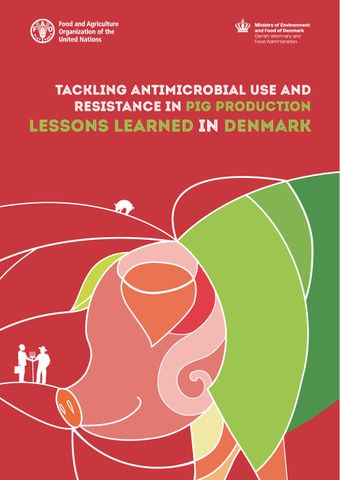Public call for change

- Author: Food and Agriculture Organization of the United Nations
- Main Title: Tackling Antimicrobial Use and Resistance in Pig Production , pp 27-30
- Publication Date: May 2019
- DOI: https://doi.org/10.18356/645ea1af-en
- Language: English
Most antimicrobials used in the treatment of pigs are identical, or closely related, to antimicrobials used for therapy in humans. Use of antimicrobials in humans and food-producing animals — such as pigs — can potentially lead to development of antimicrobial-resistant bacteria as well as selection and dissemination of existing resistance traits. Resistant bacteria can spread from animals to humans, where they can lead to infections and treatment failure. Once resistant bacteria are established in the human population, the risk of dissemination through human-to-human contact increases significantly. Human-to-animal dissemination should also not be ignored. Resistant bacteria can spread across borders via international trade and travel, making AMR a global issue. The world has seen several examples of drug-resistant infections in humans, some of which are associated with resistance traits transferred from livestock. Examples include mobile ESBL- or colistin-resistance genes in Escherichia coli, and livestock-associated methicillin-resistant Staphylococcus aureus (LA-MRSA CC398). Often these transferable resistant bacteria or resistance genes cause public concern, resulting in a raised public profile and corresponding public calls for action. In Denmark, the emergence and transmission of LA-MRSA CC398 among pigs is an example of a specific resistance trait leading to an increased focus on AMR.
-
From This Site
/content/books/9789210041577c007dcterms_title,dcterms_subject,pub_keyword-contentType:Journal -contentType:Contributor -contentType:Concept -contentType:Institution105

